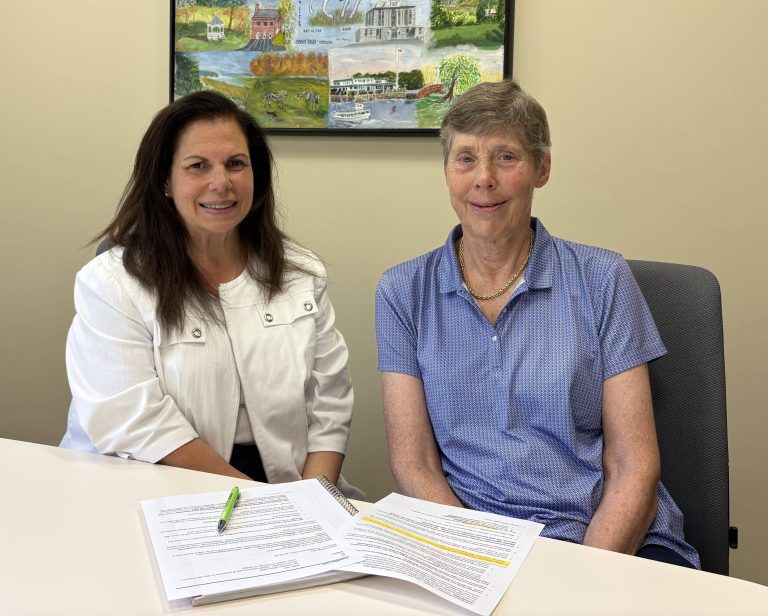By Jim Knox
Spring comes in many guises. The first stirrings of life after a long frigid winter season are often subtle, yet undeniable. From the crocuses edging up through a fresh coating of snow, to the first green sprouts of skunk cabbage, to the breezes that have lost their sting, spring arrives with a whisper.
Yet, just as the ice is thawing on the ponds, and winter is releasing its grip, spring’s second chorus loudly proclaims its colors like no other season. The creature behind this proclamation is bold, beautiful, and far from shy.
The Red-winged Blackbird, Agelaius phoeniceus, is a true and unfailing harbinger of the spring season. Its telltale song is nature’s promise of warmer, greener days. Known as the small birds that make a big entrance, Red-winged Blackbirds are among the most abundant bird species in the United States, occurring in every state but Hawaii. Though they are a year ‘round Connecticut resident species, these blackbirds favor warmer conditions, with our many northern birds migrating up to 800 miles to more southerly climes during the harshest winter cold to return with slightly longer days as the mercury nudges upward.
Intermediate in size between a House Sparrow and an American Robin, the Red-winged Blackbird is a stocky bird with short, rounded wings and a slender conical bill. While females are streaked with a camouflaging brown plumage and sport a yellowish tinge around the base of their beak and upper neck, males are coal black with brilliant scarlet wing epaulettes, sporting bright gold borders. While the blackbird’s colors are striking, its distinctive three note call seems disproportionately loud and never fails to get one’s attention.
For me, the blackbird’s mere presence seems to shout, “Hey! Look at me! Spring is here!” It is declaration that the blackbird ushers in, that is one of its most endearing traits. What’s more, the blackbird’s solo song often grows into a chorus as these strong and agile flyers form large flocks in the thousands.
Favoring open wetland habitats such as marshes, salt marshes, and rice fields for the breeding season, Red-winged Blackbirds establish themselves in these habitats early and both forage and hunt for plant and insect food as it becomes available. While males utilize the tops of cattails, Phragmites, and sedges to sing and proclaim their territory, females construct their nest deep within the dense vertical shoots of these wetland plants. Due to scarcity of appropriate habitat, up to 15 females will nest in proximity to the territorial male. Nests are normally concealed near ground level or the waterline and are intricately woven and packed with mud to form a deep cup in which to hold the pale blue-green eggs with cryptic brown streaking and speckles. While both males and females vigorously defend their nests from predators as well as intruders, the females maintain a low profile to avoid detection, slinking among the dense wetland vegetation, hunting for insect prey for their rapidly developing chicks.
Like many extraordinarily successful species, Red-winged Blackbirds leverage their hallmark adaptability to thrive, shifting from insect protein in spring and summer to seeds and grains in winter. Likewise, as seasonal conditions change, these birds shift from living in small nesting clusters in spring to form truly massive interspecies flocks with Cowbirds, Grackles, Starlings, and other blackbirds in winter. Such flocks confer the benefits of both safety in numbers, and countless eyes scanning for predators, and can grow to reach more than one million birds in size! Though it is one of the most abundant native birds in North America—with an estimated population approaching 200 million birds, it too has experienced population declines over recent decades, reminding us that even abundant species need monitoring.
The Red-winged Blackbird has much to teach us. Like so many creatures that thrive, it draws upon its diverse traits, delivering what the situation dictates. A solitary bird at times, it forms enormous social groups as needed. It is simultaneously a bird of bold prominence and a bird of cryptic guise and nature, yet it cooperates with its mate and with others of its kind to protect itself and its young. A versatile creature, it arrives in advance of the competition, staking out territory and accessing nature’s abundance as the season progresses.
Tapping into our diverse abilities is a healthy thing. Alternating between personal and social time, or between bold actions and quiet progress as the situation calls for it, serves us well. Recognizing the advantages of timeliness and cooperation toward accomplishing our objectives is invaluable. Life often demands that we progress industriously, unnoticed, yet there are also those times when it calls for us to spread our wings, show our colors, and burst into song.
Jim Knox serves as the Curator of Education for Connecticut’s Beardsley Zoo and as a Science Advisor for The Bruce Museum. A Member of The Explorers Club, Jim enjoys sharing his passion for wildlife with audiences in Connecticut and beyond.




